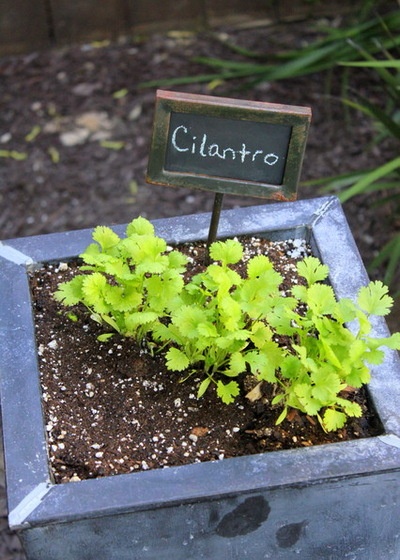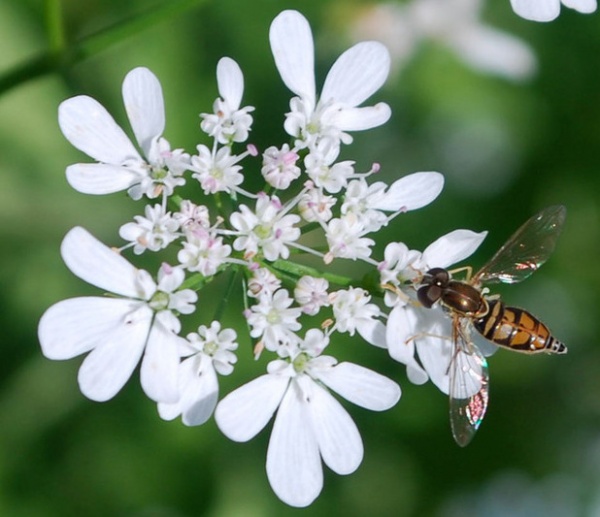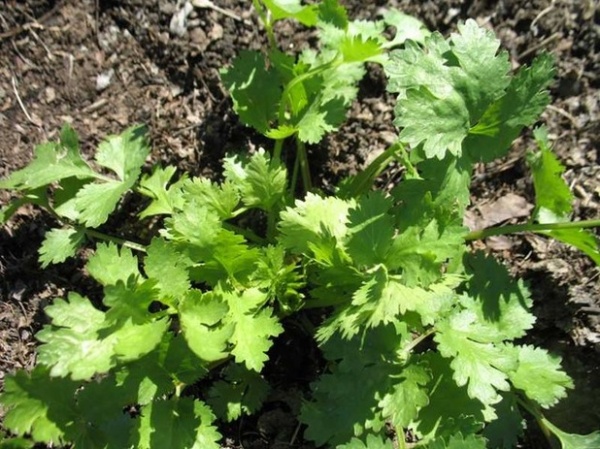Herb Garden Essentials: Versatile Cilantro Adds Flavor to Herb Gardens
Whether you call it cilantro, coriander or Chinese parsley, cilantro (Coriandrum sativum) elicits a strong reaction. Many people love it. A sizable minority can’t stand it, often calling the flavor “soapy,” which scientists now think is a genetic reaction. Either way, it’s an essential herb for many favorite dishes, especially those from Asian and Latin American countries.
Cilantro itself is nothing if not versatile. All of its parts are edible, from roots to flowers, and the coriander seeds can easily be dried to use as a spice. As a bonus, it attracts beneficial insects, such as the syrphid fly, to the garden. It also quickly loses its flavor once harvested, so having this easy-to-grow herb readily available lets you make the most of its distinctive flavor.

Light requirement: Full sun
Water requirement: Keep seedlings moist and provide regular water.
Prime growing season: Fall through spring
When to plant: Sow seeds in fall or very early spring; seedlings may not transplant well.
Unlike many herbs, cilantro does not like hot weather, so it’s best to plant it in the fall, even in cold-winter climates, where it will emerge in the spring. In warmer climates, even those with light frosts, you can plant in fall and expect a crop into winter. If you’re planting in spring, do so as soon as the ground thaws and plant successively for the largest crop. Expect the plants to bolt (flower) when it gets hot.
For a cut-and-come-again crop, cut seedlings down to the ground when they reach 3 inches tall and replant every two weeks.
More crops to grow in the cool season

Planting notes: Plant seeds ¼ inch deep in rich, well-drained soil in full sun, or light shade in the hottest climates. Keep the soil moist until the seedlings are established and then provide regular water.
Thin the seedlings to about 4 inches apart. If you’re planting in early spring, thin the seedlings to 1 inch apart and follow the harvesting directions below for a cut-and-come-again crop.
Feed with an organic fertilizer only if the plants begin to lose their color. Pests and diseases rarely bother cilantro, but if aphids are a problem, use a spray of water or a 10 percent dish soap solution to remove them.

Harvest: Pick leaves and flowers right before you plan to use them, as they quickly lose flavor. Once the flowers form, the overall flavor of the leaves will begin to fade. The leaves don’t dry well, but you can freeze them to preserve them.
To use the roots, dig up the entire plant.
Flowers that aren’t removed will produce seeds, which can then be dried. When the seeds start to turn brown on the flowers, harvest the entire plant, place the flower head in a bag, close the bag around the stem and hang the plant upside down. Shaking the plant gently will help release the seeds, which will drop into the bag. Keep the seeds whole and store them in an airtight container in a dry space away from light and heat. Use them whole or grind just before using.
How to use it: Use raw leaves and flowers as flavorings and garnishes in salads, stir-fries, side and main dishes, chutneys, burritos and tacos, quesadillas, salsas and guacamole.
Harvest the seeds for dishes calling for coriander seeds, including rice recipes and cookies. Toast them lightly before using for the best flavor.
Coriander roots are often used in Thai dishes. Dig the entire plant up and chop or pound the roots (the stems can also be used for these recipes if the roots aren’t big enough).
More: See how to grow more culinary herbs












